It’s a pity about Sam Strong’s production of The Crucible. Arthur Miller’s allegory of McCarthyism through the dark glass of 17th-century witch hunts in Salem, Massachusetts, is one of the masterpieces of the modern American theatre and it very powerfully outstares the moment of its own begetting. The persecution of old lefties, the drama of those, like the actor Lee J. Cobb (the original, marvellous Willy Loman in Death of a Salesman) and the director Elia Kazan (of Salesman, Streetcar and On the Waterfront fame) who named names, and those like Lillian Hellman, Dashiell Hammett and Miller himself who did not, when the wave of Cold War anti-communism turned hysterical, will live forever as a cautionary American aberration (albeit one that rose like a spectral serpent in the face of a totalitarianism worse than itself). But The Crucible remains a dramatic moment that is no more constricted by its occasion than Camus’s The Plague or Beckett’s Waiting for Godot needing to be understood in relation to the Nazi occupation of Europe or the French
Resistance.
The Crucible has a surging power of language, concocted by Miller from biblical rhythms and court records and Bunyan, and made into one of those never-heard-on-land-or-sea patois, a bit like the language of Melville’s Moby-Dick or Hawthorne’s The Scarlet Letter (with which this witch opera shares a moral ambience). A power of blackness, a form of American Gothic.
The pity about Sam Strong’s production is that although it is the work of a scrupulous director, the new Melbourne Theatre Company resident, who did very well with Other Desert Cities and is at pains to serve the vision of the play rather than subdue it to his own face in the mirror, does not find a style that can translate the whirlwind of dramatic tumult that makes The Crucible such a rich and fantastical story of immemorial American dream and nightmare, transposed with great imaginative largesse and intensity to a Pilgrim world of starch collars and peaked hats and Puritan blacks.
The production has David Wenham as a slightly burblingly magniloquent John Proctor (the girl-seducer who immolates himself as a hero) and Anita Hegh, credible if recessed, as his wife Goody Proctor, and a whole ensemble of actors, including the chorus of girl witches speaking for the most part in middle Australian. But the upshot is often dull and underdone, the acting style is merely naturalistic (and ordinary in the football sense of the word) where it should be reverberant and neo-Shakespearean. The set is like a coffin, constricting dramatic fulfilment. Paradoxically, although things improve in the second half with a highly coloured and authoritative performance from Brian Lipson as the judge, Danforth, Sam Strong seems incapable of giving visual form to the romantically realised but vividly pictorial action we should be seeing on stage.
The Crucible requires an inhabitation of its potentially grandiose idiom which eludes Sam Strong’s production at every point. It probably doesn’t help that The Crucible exists on film — and in a cinematic sense imperfectly realised — with a cast of all but unparalleled lustrousness: Daniel Day-Lewis uncompromising to the point of near privacy and mysticism, Joan Allen at her plainest and finest and Paul Scofield swooping like a revelation of the wisdom that can accompany unconscious black evil as the judge. Yes, and Wynona Ryder as an absolutely ravishing Abigail, the slut who effects to ride the witches’ whirlwind, full of seething erotic intensity and pale-faced raven-tressed beauty. It’s not a great film — it’s a stage director’s wet dream on celluloid — but it enshrines some all but unsurpassable performances.
Sam Strong directs this mausoleum of black emotion as if in a shoebox. On the vast stage of the Sumner this dark parable with its blond and bland lighting from the usually dashing Paul Jackson looks for all the world like the black-and-white TV of the 1950s. And the touches of modernist architecture — the Lloyd Wright curves of timber, not to mention the Father Knows Best kitchen furniture, are vacuous gestures that look empty of ideas, vacant when it comes to dramatic purpose.
The accent-blind decision — which might have worked — doesn’t. The girls, for instance, in flat youthful middle-class Australian, sound for all the world not like the simulacrum of 17th-century witches or hysterics but like girls in a no-better-than-it-should-be high school production of The Crucible. Greg Stone, as the unlovable minister Reverend Parris, succeeds in not giving his usual Greg Stone performance of leering sunniness or smirkiness, but this is all he succeeds in. His wringing hands and fluttering gestures fumble toward a characterisation he cannot sustain. Grant Cartwright, all high Australian eloquence as Reverend Hale, is at least well cast, but he looks at times, in the absence of any answering voice, like a drama student in search of a destiny. This performance, at least, may settle down. Anita Hegh has presence and a remarkable understatement as Goody Proctor. Elizabeth Nabben as Abigail is preposterously starchy and cold. Why on earth we should get an Abigail who is stiff and prune-like in a role that should make the whole audience (together with Proctor) gasp with sexual desire beggars belief. What’s wrong with Anna Samson or Nikki Shiels or any number of other young actresses suited to the role?
Then there’s David Wenham. He plays the role of Proctor with a kind of conscious grandeur of purpose, honey-voiced and with heavily made-up eyes, luxuriating with his cello-like voice in the sumptuousness of the language but with only irregular flashes of real feeling, fine actor though he is.
Only Brian Lipson as Judge Danforth in the second half is ‘big’ enough to sustain the deliberate nobility of the writing. This at least is acting of appropriate scale and reverb-eration. It’s true too that when Strong uses more of the stage — in the build-up to the terrible resolution — the production does at least get a bit of sweep and life and the lighting is allowed to have its flickers of dramatic suggestiveness.
But this is a disappointing production by a highly intelligent director with his heart in the right place. Even after the interval there seems to be an inability to fill the stage with an image of orchestrated dramatic action. It is a chamber performance where this play more than anything else in the whole 20th-century American repertoire calls for a quasi-operatic richness of effect.
As a schoolboy I saw George Whaley play Proctor in a John Sumner production of which I can still remember the dark red colouration and the storm and the fury, the imperfect but still rich sense of pity and terror. Only Julia Blake as the saintly old Rebecca Nurse, speaking softly in a West Country lilt (like the echo of the days when the understanding of this sort of theatre was implicit and instinctive) seems to come from The Crucible that, like it or loathe it, stalks all our dreams.
Got something to add? Join the discussion and comment below.
Get 10 issues for just $10
Subscribe to The Spectator Australia today for the next 10 magazine issues, plus full online access, for just $10.
You might disagree with half of it, but you’ll enjoy reading all of it. Try your first month for free, then just $2 a week for the remainder of your first year.

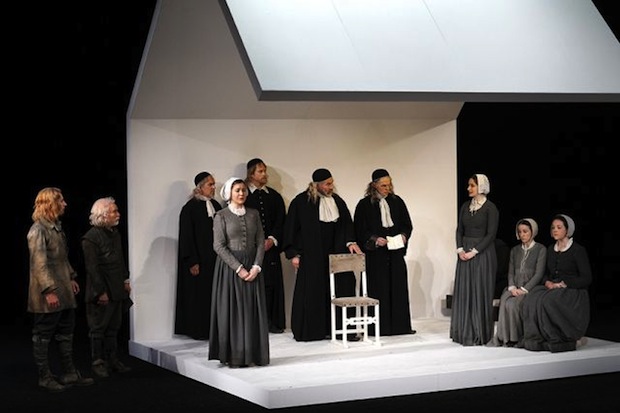
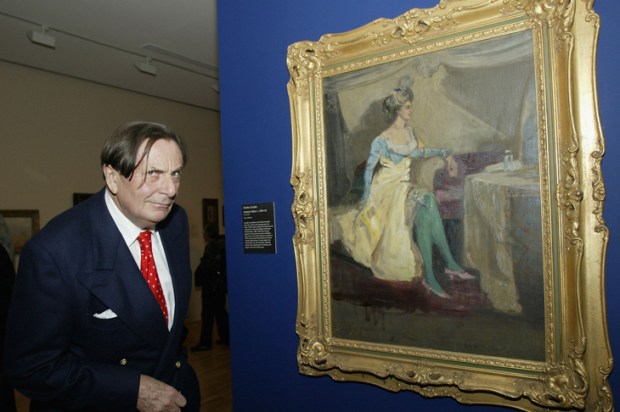


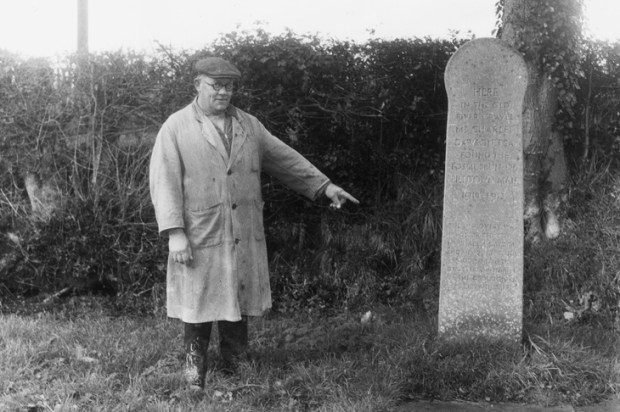
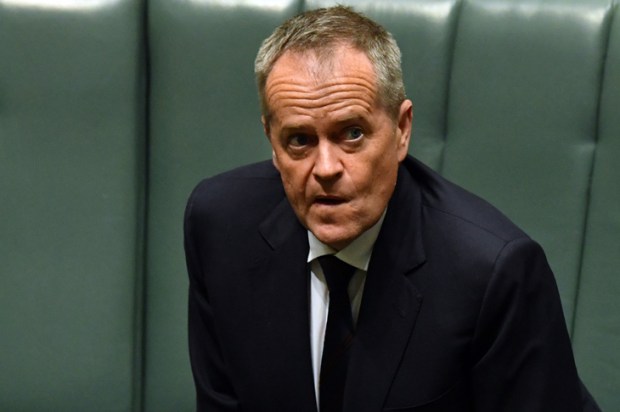
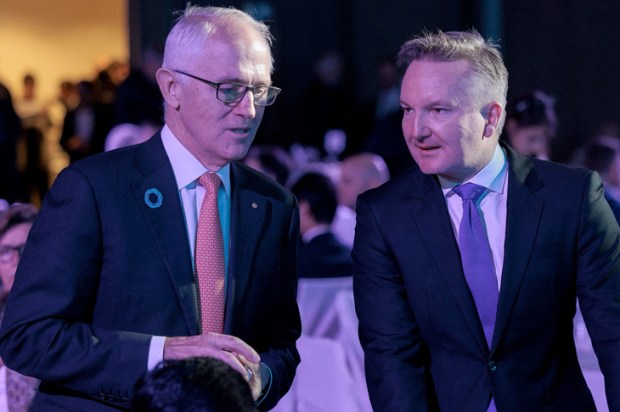






Comments
Don't miss out
Join the conversation with other Spectator Australia readers. Subscribe to leave a comment.
SUBSCRIBEAlready a subscriber? Log in